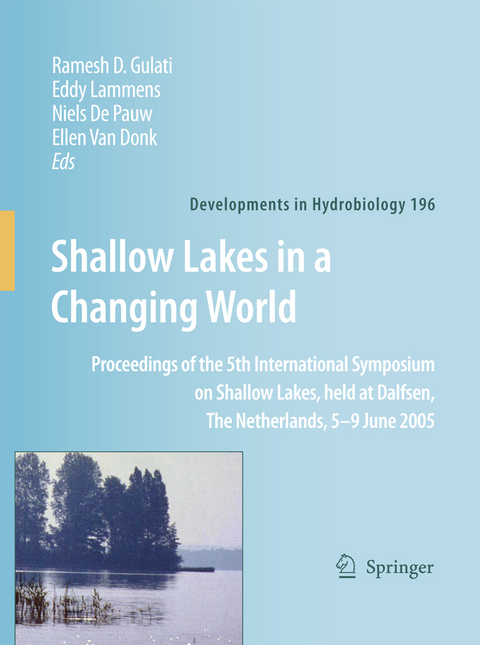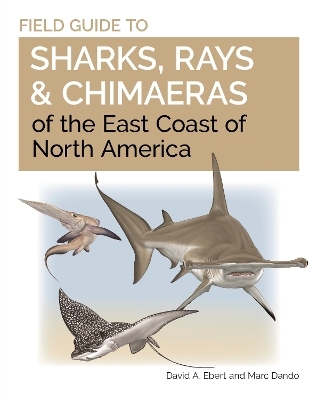
Shallow Lakes in a Changing World
Springer-Verlag New York Inc.
978-1-4020-6398-5 (ISBN)
Nutrient Dynamics.- Phosphorus reference concentrations in European lakes.- Benthic nutrient fluxes in a eutrophic, polymictic lake.- Modeling nitrogen cycling in a coastal fresh water sediment.- Sediment phosphorus cycling in a large shallow lake: spatio-temporal variation in phosphorus pools and release.- Nitrate dynamics in a reed belt of a shallow sand dune lake in Japan: Analysis of nitrate retention using stable nitrogen isotope ratios.- Temporal trends of ion contents and nutrients in three Kenyan Rift Valley saline-alkaline lakes and their influence on phytoplankton biomass.- Macrophytes.- Elongation and mat formation of Chara aspera under different light and salinity conditions.- Searching for allelopathic effects of submerged macrophytes on phytoplankton—state of the art and open questions.- Allelopathic activity of Stratiotes aloides on phytoplankton—towards identification of allelopathic substances.- The role of aquatic macrophytes in microhabitatual transformation of physical-chemical features of small water bodies.- Assessment in two shallow lakes of a hydroacoustic system for surveying aquatic macrophytes.- Limnogy/Paleolimnology.- Combining limnological and palaeolimnological approaches in assessing degradation of Lake Pskov.- Sediment diatom assemblages and composition of pore-water dissolved organic matter reflect recent eutrophication history of lake peipsi (Estonia/Russia).- Factors influencing taxonomic composition and abundance of macrozoobenthos in extralittoral zone of shallow eutrophic lakes.- Food WEBS.- The role of cladocerans reflecting the trophic status of two large and shallow Estonian lakes.- Contribution of different zooplankton groups in grazing on phytoplankton in shallow eutrophic Lake Võrtsjärv (Estonia).- Horizontal dynamicsof Zooplankton in subtropical Lake Bianca (Uruguay) hosting multiple Zooplankton predators and aquatic plant refuges.- Functional response of Anodonta anatina feeding on a green alga and four strains of cyanobacteria, differing in shape, size and toxicity.- The role of herbivorous water birds in aquatic systems through interactions with aquatic macrophytes, with special reference to the Bewick’s Swan — Fennel Pondweed system.- Cascading trophic effects in pampean shallow lakes: results of a mesocosm experiment using two coexisting fish species with different feeding strategies.- Impact of hydrology on aquatic communities of floodplain lakes along the Daugava River (Latvia).- Lake Restoration.- Shallow lake restoration by nutrient loading reduction—some recent findings and challenges ahead.- Reaction of large and shallow lakes Peipsi and Võrtsjärv to the changes of nutrient loading.- Spatial and temporal diversity of small shallow waters in river Lužnice floodplain.- Potential for the development of submerged macrophytes in eutrophicated shallow peaty lakes after restoration measures.- The importance of drawdown and sediment removal for the restoration of the eutrophied shallow lake Kraenepoel (Belgium).- Why biomanipulation can be effective in peaty lakes.- Mediterranean Lakes.- State of the art in the functioning of shallow Mediterranean lakes: workshop conclusions.- Changes in bacterial and ciliate densities with trophic status in Mediterranean shallow lakes.- The relationship between phytoplankton species dominance and environmental variables in a shallow lake (Lake Vrana, Croatia).- Comparative biodiversity of crustaceans and aquatic insects from various water body types in coastal Mediterranean wetlands.- Land use changes and associated environmentalimpacts on the Mediterranean shallow Lake Stymfalia, Greece.- EUropean Water Framework Directive.- Impact of climatic variability on parameters used in typology and ecological quality assessment of surface waters—implications on the Water Framework Directive.- Shallow lakes, the water framework directive and life. What should it all be about?.- Submerged macrophyte vegetation and the European Water Framework Directive: assessment of status and trends in shallow, alkaline lakes in the Netherlands.- Climatic Change.- Climate-induced shifts in an experimental phytoplankton community: a mechanistic approach.- Impact of climatic fluctuations on characeae biomass in a shallow, restored lake in The Netherlands.- Response of macro in vertebrates to warming, nutrient addition and predation in large-scale mesocosm tanks.- The role of temperature in the population dynamics of smelt Osmerus eperlanus eperlanus m. spirinchus Pallas in Lake Peipsi (Estonia/Russia).- Predicting the effect of climate change on temperate shallow lakes with the ecosystem model PCLake.- Shallow lakes theory revisited: various alternative regimes driven by climate, nutrients, depth and lake size.
| Reihe/Serie | Developments in Hydrobiology ; 196 |
|---|---|
| Zusatzinfo | VIII, 466 p. |
| Verlagsort | New York, NY |
| Sprache | englisch |
| Maße | 177 x 254 mm |
| Themenwelt | Naturwissenschaften ► Biologie ► Limnologie / Meeresbiologie |
| Naturwissenschaften ► Biologie ► Ökologie / Naturschutz | |
| ISBN-10 | 1-4020-6398-9 / 1402063989 |
| ISBN-13 | 978-1-4020-6398-5 / 9781402063985 |
| Zustand | Neuware |
| Informationen gemäß Produktsicherheitsverordnung (GPSR) | |
| Haben Sie eine Frage zum Produkt? |
aus dem Bereich


